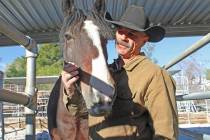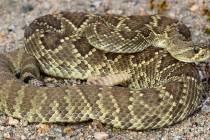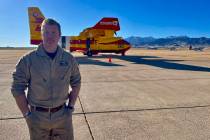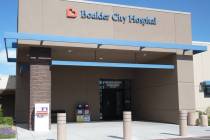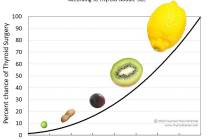Scientists discuss plans for asbestos center
A group of scientists is applying for a grant to study asbestos in Boulder City and if it gets the money it will be relocating to the arid Southern Nevada desert and digging for answers as early as next spring.
In a meeting March 23 at the Christian Center Church, a team of scientists outlined to an audience of about 20 Boulder City community members what its mineral-dust-related projects would entail if it received a five-year, $8.5 million federal grant to conduct research.
Researchers were upfront about what they know now about naturally occurring asbestos and environmental exposure in Boulder City: not much.
But they also expressed confidence in the strength of their team, which is comprised of nine research scientists from UNLV, the University of Montana and Montana State University with focuses in geology, epidemiology, microbiology and immunology, some of whom have more than a decade of experience studying a similar asbestos site in Montana.
“One of the great things about this program … it’s really not only multidisciplinary, but also very integrated,” said Curtis Noonan, an environmental epidemiologist from the University of Montana. “All of the projects sort of relate to one another and can learn from each other so that the whole is greater than the sum of the parts.”
The group will submit its grant application to the National Institute of Environmental Health Sciences by April 11 and should have an idea in October of its chances of being funded, said Jean Pfau, a professor and researcher at Montana State University. If it receives the grant, the money will be awarded about a year from now.
The name of the center, if it is funded, will be the Center for Asbestos Research in the Environment.
“Even if this particular grant does not get funded, we’re already doing the research,” said Pfau, who studied asbestos exposures in Libby, Montana, for 15 years. “We’re already moving forward.”
The proposed center would be a hub for five projects. The first would aim to test a model that predicts where asbestos is occurring and in what concentrations. The second would study whether “land disturbance” activities — operating all-terrain vehicles, for this experiment — exposes people to amphibole asbestos and to what extent.
A third project would research how asbestos fibers form in the environment and Pfau’s project, the fourth listed in the grant proposal, would test the health effects of Nevada’s amphibole asbestos on mice. The fifth project would deal with remediation: Scientists would test a unique method that could possibly stabilize soil surfaces and reduce health risks.
A common thread throughout the session, which Pfau called a “heads up” meeting, was that there will be no black and white answers.
“Science is not simple,” she said at the start of the meeting.
If funded, the center would have a “connection point” or field station where Boulder City residents and other stakeholders could go to get information and updates on the projects, Pfau said. Though the team would make its discoveries available to other researchers, the community and public officials, it wouldn’t make any recommendations.
One audience member said she lives in the apartments across from the elementary school where UNLV researchers reported finding high levels of asbestos last year. When she asked what to do about landscapers whose leaf blowers stir up dust near her home once a week, the researchers said she would have to reach out to city representatives.
Several residents in attendance wondered aloud why city officials didn’t attend the March 23 meeting. Two people from the Southern Nevada Health District sat in on the forum, as did Henderson Safety Manager Tyson Hollis and Boulder City Public Works Director Scott Hansen.
Noonan said the group held a meeting the night before the community forum with several city and state representatives and the outcome was very positive.
“It was a really rich discussion,” Noonan said. “These are not easy things to figure out from a policy perspective.”
As for preliminary safety recommendations, “If you can reduce your exposure overall, you’ll be better off until we know,” said UNLV geochemist Rod Metcalf.
Tanis Hernanadez, a member of the would-be center’s community engagement crew, listed a few ways to protect yourself until researchers know more: Don’t garden or dig around in the dirt without wetting it down first, hose your lawn before mowing it and don’t let your pets onto your furniture.
“We are very engaged in this,” Pfau said of the proposed center. “We are passionate about our research; we learned a great deal in working with the asbestos exposures that have occurred in Montana and we think that we can use that information to help you.”
Contact Kimber Laux at klaux@bouldercityreview.com or 702-586-9401. Find her on Twitter: @lauxkimber






